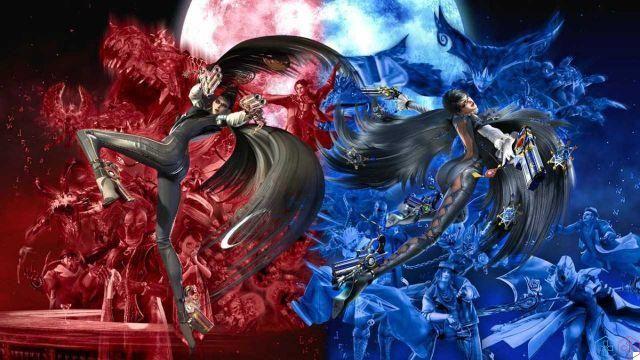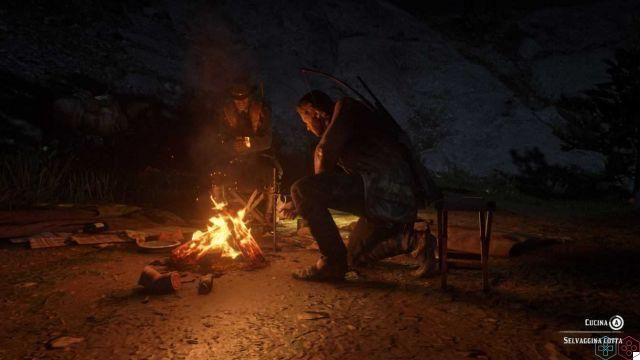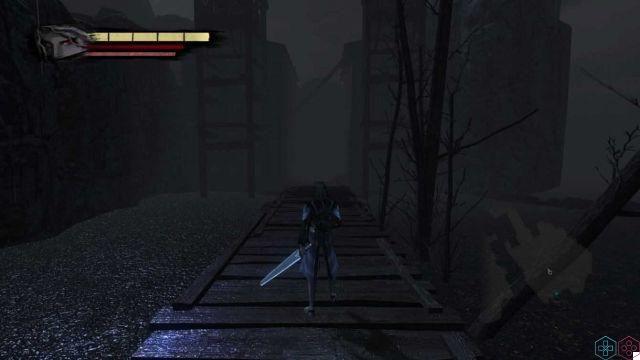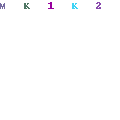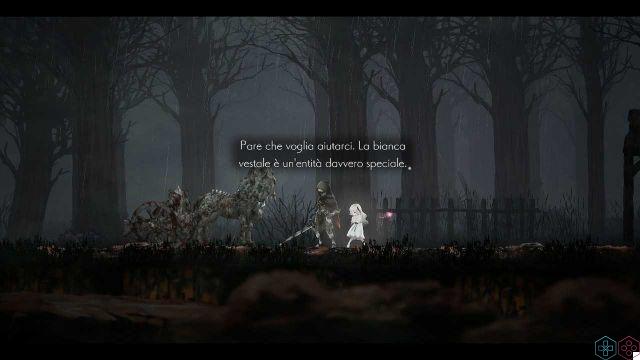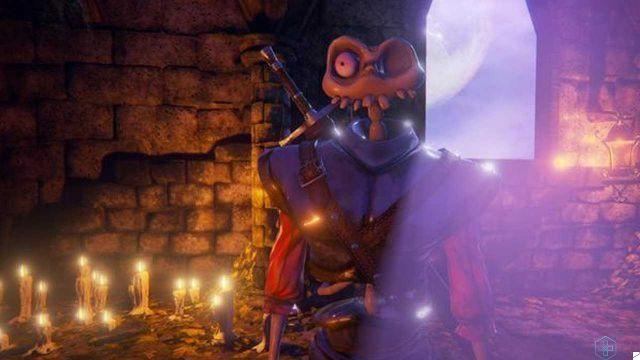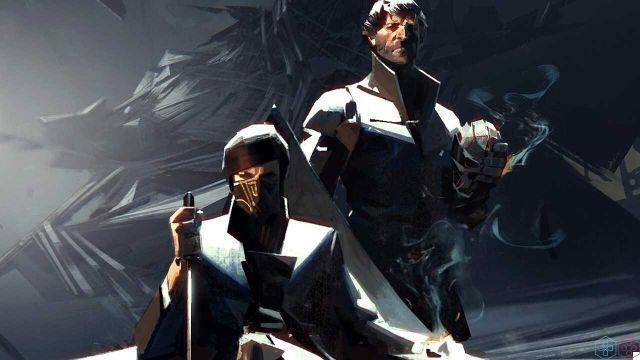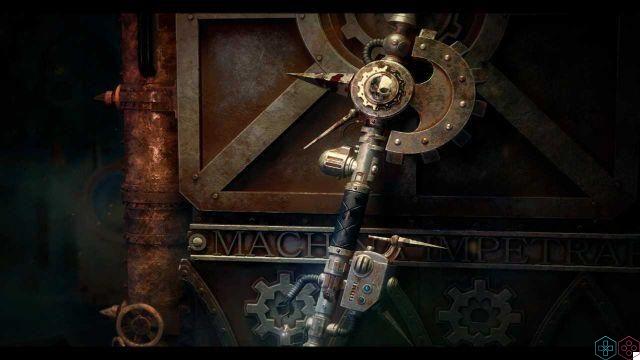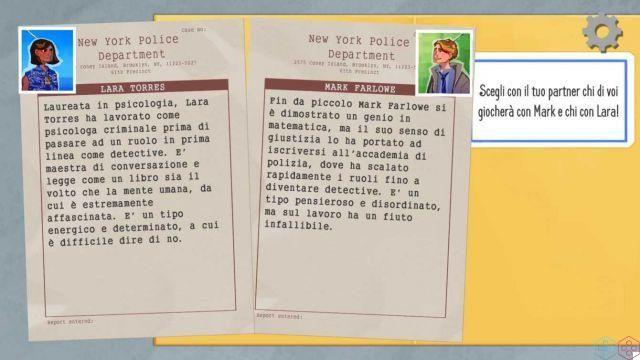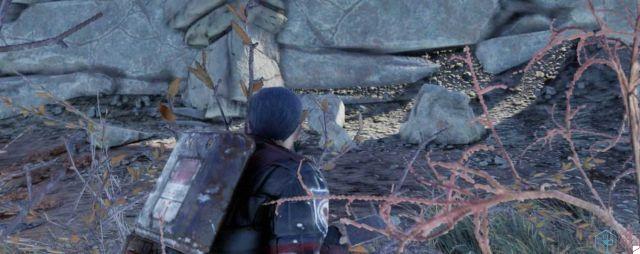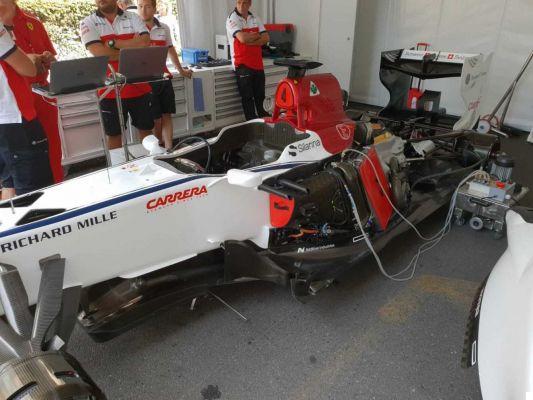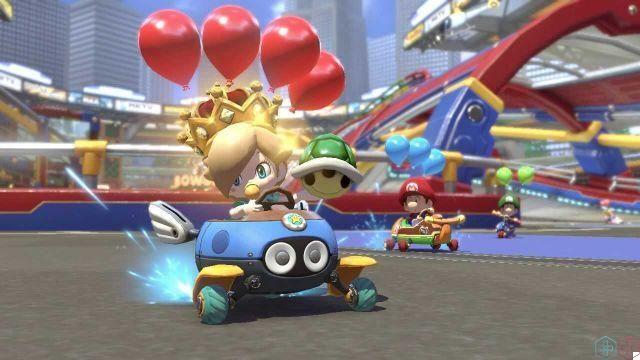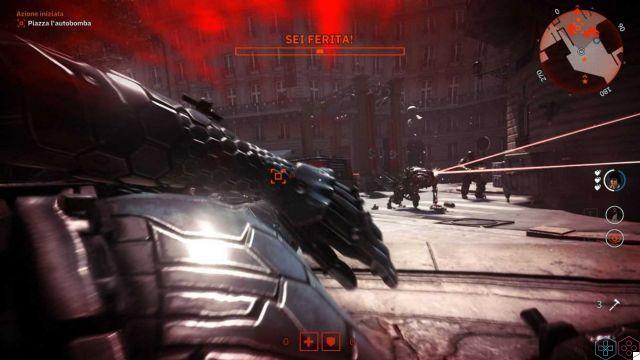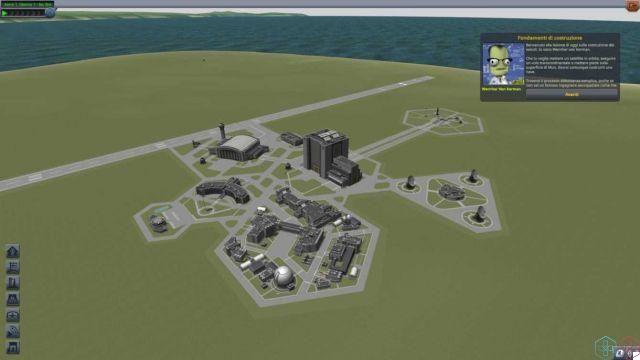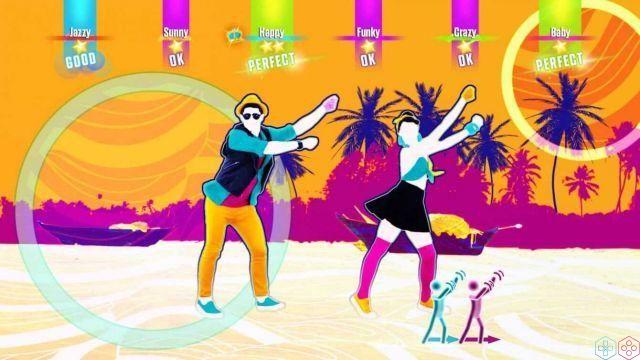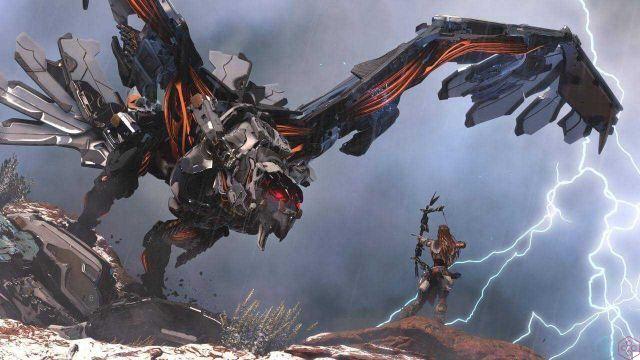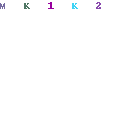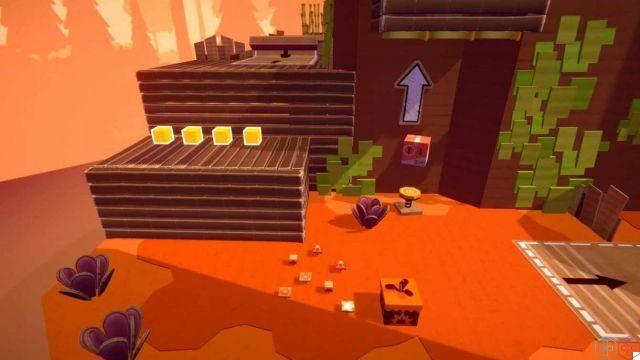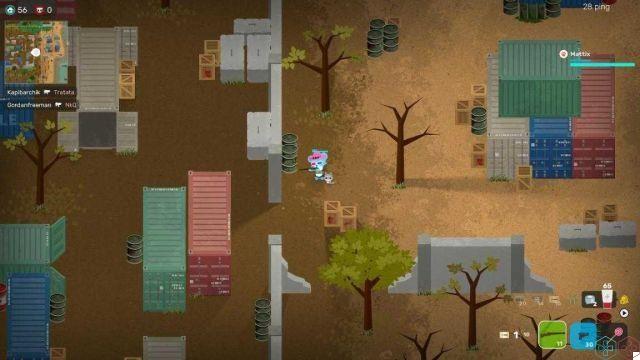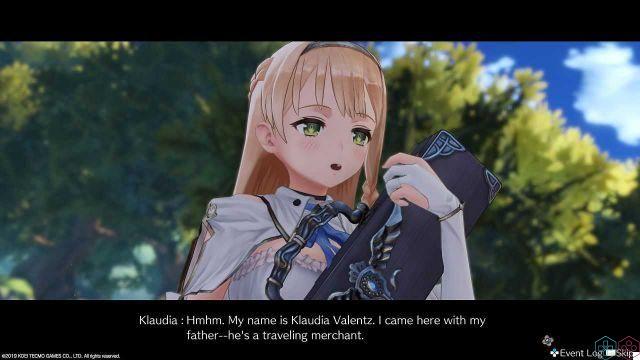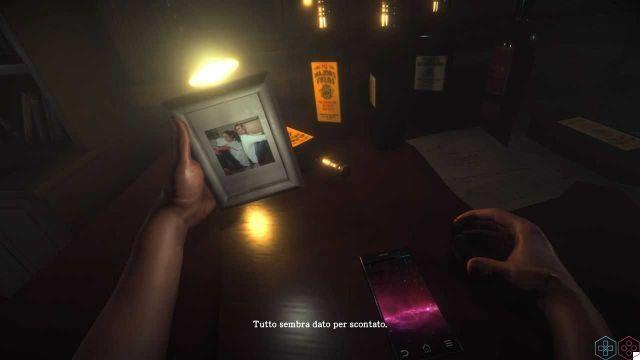After a ten-year wait, Persona 5 has finally landed exclusively on PlayStation 4. To define a video game as a “masterpiece” you have to start off with lead feet, it is true, but Persona 5 is very close to this status. In our review we will explain how the new RPG set in the streets of Tokyo meets art on various levels of realization: visual, narrative, and structural
Come to think of it, the idea behind 5 person it is something exceptional in its originality. Let's talk about the same game we offered you a short while ago a useful guide to get started. During the day we are high school students in the classic Japanese non-place city: we have our social interactions, we take care of our friendships, we mind our own business (and that of others) around the streets, in a bar, in the meeting points of the town. But at night, very poetically, we become gods phantom thieves and we live a second life, exploring palaces that are actually worlds in their own right, as well as metaphorical materializations of the corrupt hearts of the city's adults.
Of course it was not just the basic idea, which was brilliant in itself, to decree the success of Persona 5. Success that, as you can imagine, arrived immediately, announced by the first "tests" with the hand of the title and then sanctioned by most of the international reviews. This success, as you will also understand from our review, was more than deserved. It is a franchise that has become more and more famous over the past few 20 years, starting from that Megami Tensei from which it initially took off, almost like a spin-off.
We assess the situation
The fame of 5 person is lost in the more or less recent past, to which the title looks with respect while trying completely new paths, since the videogame market (especially Western) changes visibly, even if we often don't realize it. Someone will know that in Japan the brand linked to Megami Tensei has an important past, which has its roots in the late XNUMXs, when the rights to a series of fantasy-horror novels signed by a certain Aya Nishitani they were acquired by Namco, interested in transposing the particular setting of the novels into digital works. The first story, translated into "Digital Devil Story: Megami Tensei“, He saw as the protagonist a high school computer genius, capable of summoning demons through a computer. Does it tell you anything? Yes, it was the prototype of the Person.
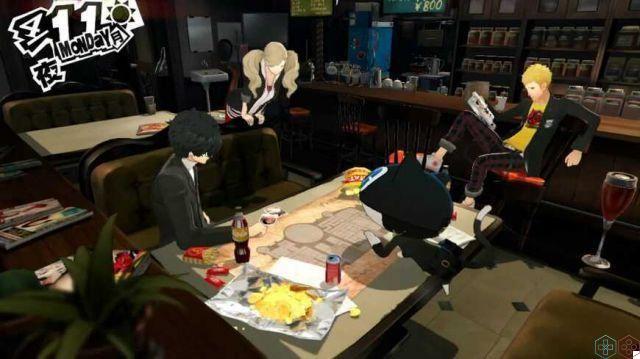
Success and popularity were not long in coming, at least in the motherland. From that far away 1987 the world of Megami Tensei, thanks above all to Atlus, expanded dramatically through a tide of episodes, all characterized by a surprising quality to say the least. Person, in this sense, it has taken on the role of decisive ace in the hole for the Japanese developer: the franchise is not only one of the best known, but also among those appreciated without reservation by anyone who can be defined as a true JRPG lover.
Before continuing, however, let us clarify one issue. Despite the strong advertising investment and word of mouth, aim to exhibit Person to a wider audience than in the past, Atlus did not attempt a revolution in hopes of winning new fans. He didn't even care to focus on open world and photorealistic graphics, which seem to have to dictate the current market so much.
The Japanese developer has instead clung to tradition, working on the formula that ten years ago made famous at home and abroad. 3 person e 4 person, to do what it does best: tell a story and then build a winning Japanese RPG on it. There may have been some concessions to modern times: a larger world, more recent themes, more credible interactions. But it's the gameplay that made the series famous.
Students, thieves or both? To you the choice
5 person detaches itself from the clichés of Japanese cartoons and also from the atmospheres experienced in the previous Persona 4, getting closer to 2 person e 3 person as themes and situations. From the beginning we realize that the atmosphere is certainly not the most serene: our protagonist is entrusted to the owner of a Tokyo bar because on probation. But what crime did he commit? He intervened in defense of a girl on her way home from school. However, the attacker was a powerful man, so much so that he bought the victim's silence, making our alter ego arrested.
The crime has embarrassed his parents, in a contradictory society where family is everything but the welfare state matters more than blood ties. And so our protagonist ends up attending a small suburban school where practically everyone treats him like a hooligan: he has a dirty record, the rest doesn't matter and nobody cares. But here something changes: at a certain point our boy discovers that he possesses a strange power.
Thanks to a mysterious Whatsapp in the smartphone can enter the Metaverse, a parallel dimension constituted by the perceptions of ordinary people. In this reality some particularly evil individuals have erected "Palaces", which represent the way they see the world with their own eyes. In the Metaverse, the protagonist will meet Morgana, a kind of talking cat that will reveal a great secret to him: by stealing the "treasure" kept in a palace it is possible trigger an afterthought, forcing the bad guy on duty to repent and confess his crimes.
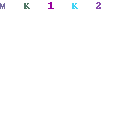
The time has come to found Banda dei Phantom Thieves, the "phantom thieves" capable of changing society from within. However, this is only the beginning of an incredibly long, complex and articulated story, capable of involving the player as well 80 hours of game. We do not want to anticipate anything else, we went so far as to tell you about the first 4 hours of the game with difficulty, but know that in Persona 5 there are very delicate and absolutely topical themes such as child abuse, sexual violence, prostitution, law enforcement and political corruption that we should cling to in a modern and civilized society. The deeper themes, with distressing and mature features, are interspersed with important twists and mixed with the daily problems, the more monotonous ones, which mark the life of any teenager trapped between social commitments and going to school.
Narration and combat
An interesting story and deep themes. But what do we ultimately do in 5 person? Apparently the answer is simple, but in reality the options available to the player are so many and have so many implications, that it would be impossible to account for the complexity and depth of the title in a few lines. Basically the days of our heroes are marked by a morning / day / night cycle, each of which is dedicated to carrying out specific actions (yes, you never sleep!). In the morning we will go to school with our classmates and friends, in the afternoon we will dedicate ourselves to social relations, late at night we will become the Phantom Thieves, ready to (try to) save Tokyo from the political and moral corruption of its shady individuals.
The latter will be the phase with the canonical turn-based battles, while in the rest of the day we will dedicate ourselves more to exploring the city, to attend rather long cutscenes (up to an hour) and to cultivate relationships with our friends. (reading books, chatting, helping, etc…). 5 person it is above all this: a huge narrative that winds through beyond 50 hours of game. It makes no sense to skip certain steps, since it is not a game that lends itself to the "hit and run" of these years. The title is a complete work of art in itself, it must be savored, meditated, enjoyed with all the time it requires.
During the day it will be possible to play various mini-games in the city of Tokyo. Each minigame finds its precise place in the economy of the title, without ever being an end in itself. The many activities available are not only fun and useful to spend a few moments of leisure, but also serve to increase a pentagon of social characteristics. The latter are called respectively Charm, Kindness, Guts, Knowledge e Proficiency. Each point earned allows you to have access to new activities and options related to socializing.
Working on the relations that keep us tied not only to the members of the group, but also to other NPCs, we will also increase the characteristics of the "tarot" tied to each individual. Here is a practical example: by leveling up the tarot associated with the doctor from whom we supply ourselves for consumables, it will be possible to have discounts and unlock new items. Or, by strengthening relations with Igor, it will be possible to have access to new skills and options to be used during the fight. The system, although immediate and well known by enthusiasts, is extremely deep and so well thought out that it cannot be underestimated or overshadowed.
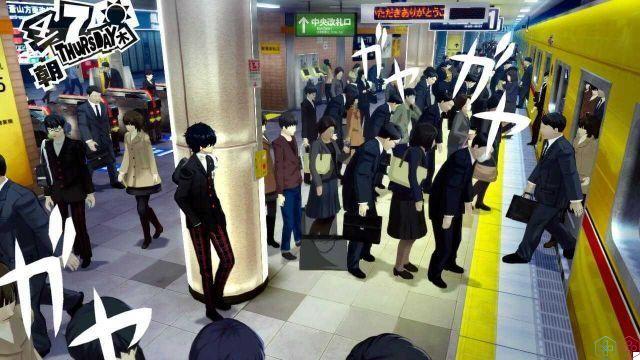
At night, however, the role of champions of justice and everything we have accomplished during the day will come in handy. Having become phantom thieves we will find ourselves facing enemies upon enemies for the buildings of Tokyo, with the help of our Person. These palaces are nothing but immense and labyrinthine dungeon overflowing with opponents and traps of all sorts, placed precisely to protect that "treasure" that the thieves will have to steal within a time limit. Since the main dungeons are immense, the planning of the hit is left to the player, who can decide to break the mission into more raids thanks to the presence of safe room placed in strategic points. Thanks to the "safe rooms" it is possible to return to our world, the real one, allowing us to take a breath and re-equip ourselves properly to face the next section.
There is no shortage of secondary requests that can be completed by exploring the so-called Mementos, that is a huge maze similar to a subway formed by the set of corrupt consciences of "ordinary" people.
Person 5: charisma to sell
The immense work put together by Altus it exudes style and exaggeration from every pixel and animated clip, so much so that very often we have forgotten that we were playing instead of seeing a splendid anime. Among the points in favor that we would like to remember, here are at least two: first of all the team has decided to use a color palette with warm and intense tones, mainly crimson red, an extremely characterizing element if we consider that this element will return several times in the course of history. Furthermore, right from the introductory screen, we are overwhelmed by a biting and brash “urban” style: every detail accentuates that sense of rebellion, that intolerance to the “chains” set by society.
Even the Personas used by the protagonists reflect in all respects this wild and unconventional spirit. Compared to previous episodes, where the entities identified themselves mainly with deities belonging to certain pantheons, in 5 person they are nothing more than a splendid reinterpretation of some of the most famous outlaw of history and literature: Carmen (femme fatale staged by Bizet), the pirate William Kidd, the legendary bandit Goemon (belonging to Japanese folklore), Zorro and the gentleman thief Arsenio Lupine.
This translates into a precise and consistent characterization, especially when we come to the presence of the final bosses of each Palazzo. The animations are convincing, despite the stealth dynamics are not precise and very often clash with the management of the camera. Well, perhaps a greater care in this respect would not have spoiled. But everything else is applause.
9.3Points in favor
- Amazing storytelling
- Unforgettable characters, situations and history
- Fun and deep gameplay
- Artistically and visually winning
Points against
- Perhaps the on-screen dialogues are excessively long ...
- ... as well as the anime-style interludes
- All in English




